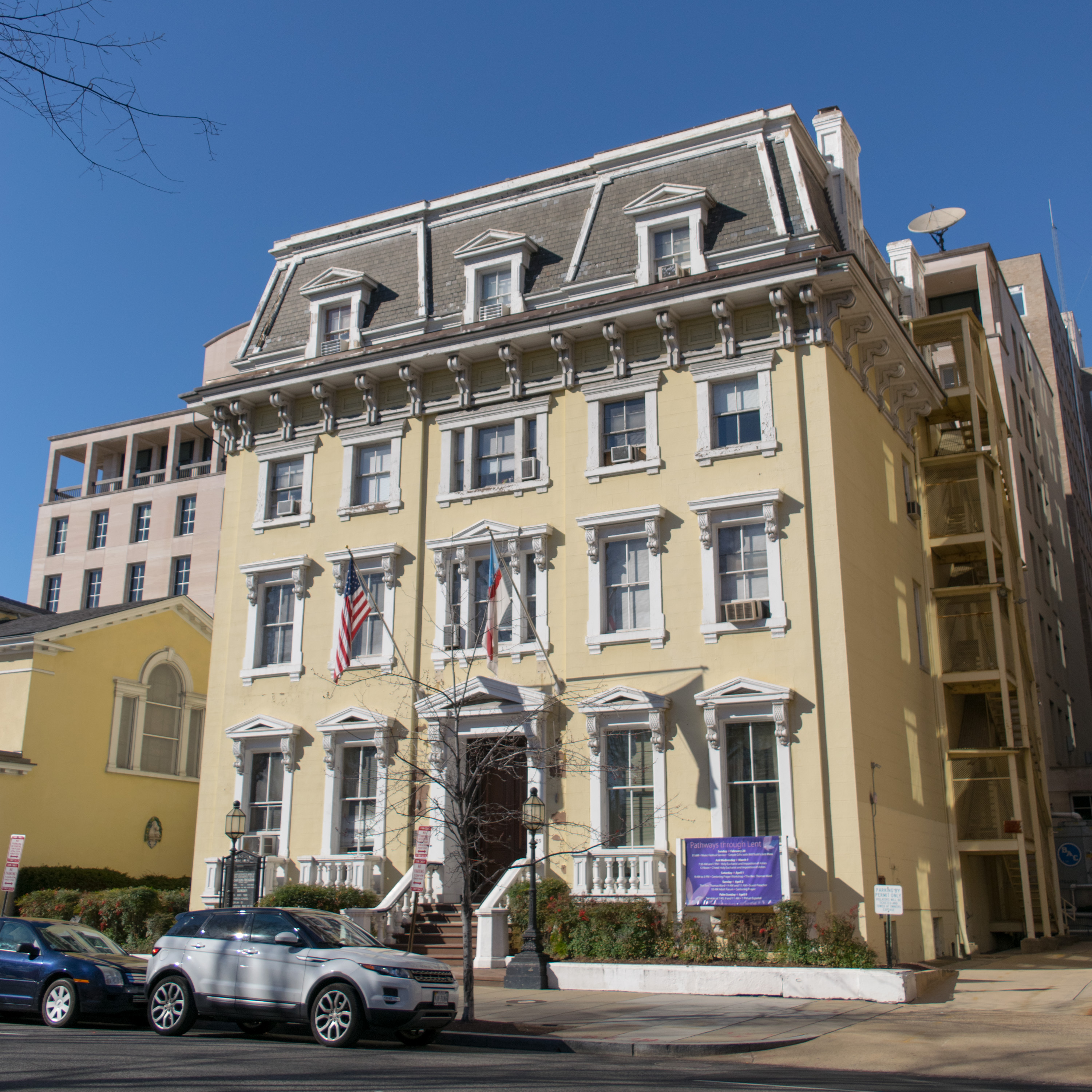This article was originally published in 2020.
St. John’s Episcopal Church at Lafayette Square, the site of a much-debated visit during the Trump presidency, has ties to Lebanon County in the form of one of its most prominent historical families: the Colemans.
A Facebook post made by the Cornwall Iron Furnace highlighted the connection between the two around the time the church was in the news.
Prior to President Donald Trump’s appearance at the church in June 2020, which sits one block from the White House and has been attended at least once by every sitting president since James Madison, it had partially caught on fire amid protests in the capital over the death of George Floyd. A fire in the basement of the connected parish building, the Ashburton House, was quickly extinguished and appears to have caused little damage.
The Ashburton House did not begin as a parish house for the church, however. The church was designed by an architect of the Capitol Building, Benjamin Latrobe, and its 1816 construction precedes the Ashburton House by 20 years.
Ashburton gets its name from Lord Ashburton, a British resident of the property. He’s best remembered for the Webster-Ashburton Treaty of 1842, negotiated at the house during his stay there alongside Secretary of State Daniel Webster. The treaty resolved boundary disputes with colonies that would later form Canada. Following Ashburton was the Bulwer-Lytton family, including writer Edward and diplomat Henry (resulting in another agreement, 1850’s Clayton-Bulwer Treaty).
The property passed through several other hands before, in the spring of 1853, Sarah Coleman purchased the property for $30,000, according to a 1924 edition of Washington DC’s Evening Star paper. Sarah was the daughter of Thomas Bird Coleman, himself the son of Robert Coleman, whose ownership of the Cornwall Iron Furnace, Colebrook Furnace, and many other iron industry businesses made him Pennsylvania’s first millionaire.
Read More: The Colebrook Furnace ghost story
In the 1850s, the Colemans’ legacy in Lebanon was already well-established. Though patriarch Robert had died in 1825, the family continued to wield an immense influence on Lebanon and surrounding counties thanks to their wealth. Family member George Dawson constructed the first mansion of what would later become Coleman Memorial Park in the same year that Sarah bought the Ashburton House.

In 1854, another line of the Coleman extended family bought partial ownership of the house from Sarah. The Freemans, Sarah’s sister Margaret Cassatt and Margaret’s husband Colonel William Freeman, were deeded half the property, and it is there that they spent the rest of their lives (aside from vacations back to Cornwall to the family mansion).
Read More: LebTowns: North Cornwall & Karinchville
The presidential tradition of visits to the adjacent church notably intersected with the Colemans through James Buchanan, whose star-crossed infatuation with Ann Caroline Coleman (daughter of Robert, and Sarah and Margaret Cassatt’s aunt) in his youth “broke his heart and turned his mind toward statecraft” upon her death in 1819, according to an article published in the 27 March 1897 edition of the Los Angeles Evening Express. That same article claimed that, decades later, Buchanan was a frequent visitor to the Coleman women and the Ashburton House “whenever the affairs of state permitted him to do so.”
Read More: This Presidents’ Day, remembering Lebanon’s links to our country’s highest elected office
During the time of the Coleman-Freeman occupation, the house underwent significant modifications, including the construction of an iron cornice, an expanded basement, and a fence, among other additions. The architect of the transformation from a “Greek Revival mansion to an Italianate palazzo” was Thomas U. Walter, who designed the House and Senate wings as well as the iconic dome of the Capitol Building (the church next door having been designed by one of its original architects).
William Freeman died in 1866, and over a decade later his widow added a fourth story and a mansard roof to the house. Sarah Coleman never married, and when she died in 1893, her sister Margaret Cassatt was the sole occupant. A year later, she, too, died, leaving the house in the hands of her daughter Margaret Freeman Buckingham, best known as the namesake of the Buckingham Mansion now part of Cornwall Manor.

Along with husband Benjamin and sister Isabel, Buckingham made the Ashburton House her home for the rest of her life (aside — of course — from the requisite trips back to the Cornwall homestead). Buckingham was the last direct descendant of Robert Coleman, and upon her death in 1945, the property passed on to her nephew and sole heir William Freeman Jr., who sold the house to the American Federation of Labor for one million dollars in 1947 (he was also responsible for the sale of the Buckingham Mansion back in Cornwall). In 1953, St. John’s Episcopal Church purchased it, and it became the parish house it is today.
The connection between Lebanon County and the church and house is a winding trail of history, from Cornwall to Washington DC and back again — and traveling down that path reminds us of the strange, incredible associations we have with the rest of the country and world.
Read More: Finding a Lebanon connection in an unexpected place: Key West’s Fort Taylor
Have you run into an unexpected Lebanon County connection while traveling elsewhere? Let us know and we might feature it in an upcoming story.
Give the gift of local journalism.
If you are thankful for what LebTown brings to the community, consider joining our cause as a member. Members get an inside look at our publishing schedule each week, plus invites to our members-only Facebook group and happy hours.
Sign up for an annual membership using the link below, and we’ll give you a free LebTown mug at the next happy hour.
Learn more and join now here.


































